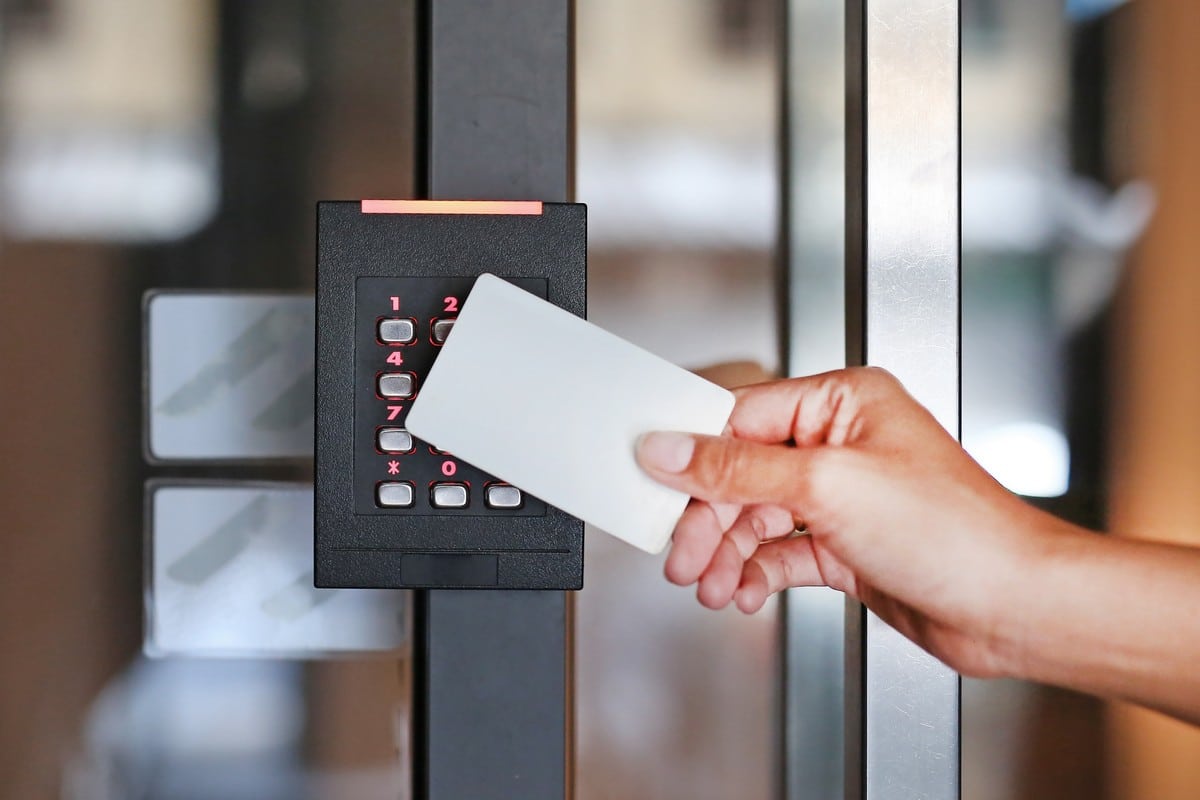 How to pick a lock – The Best Guide to Lockpicking
How to pick a lock – The Best Guide to Lockpicking
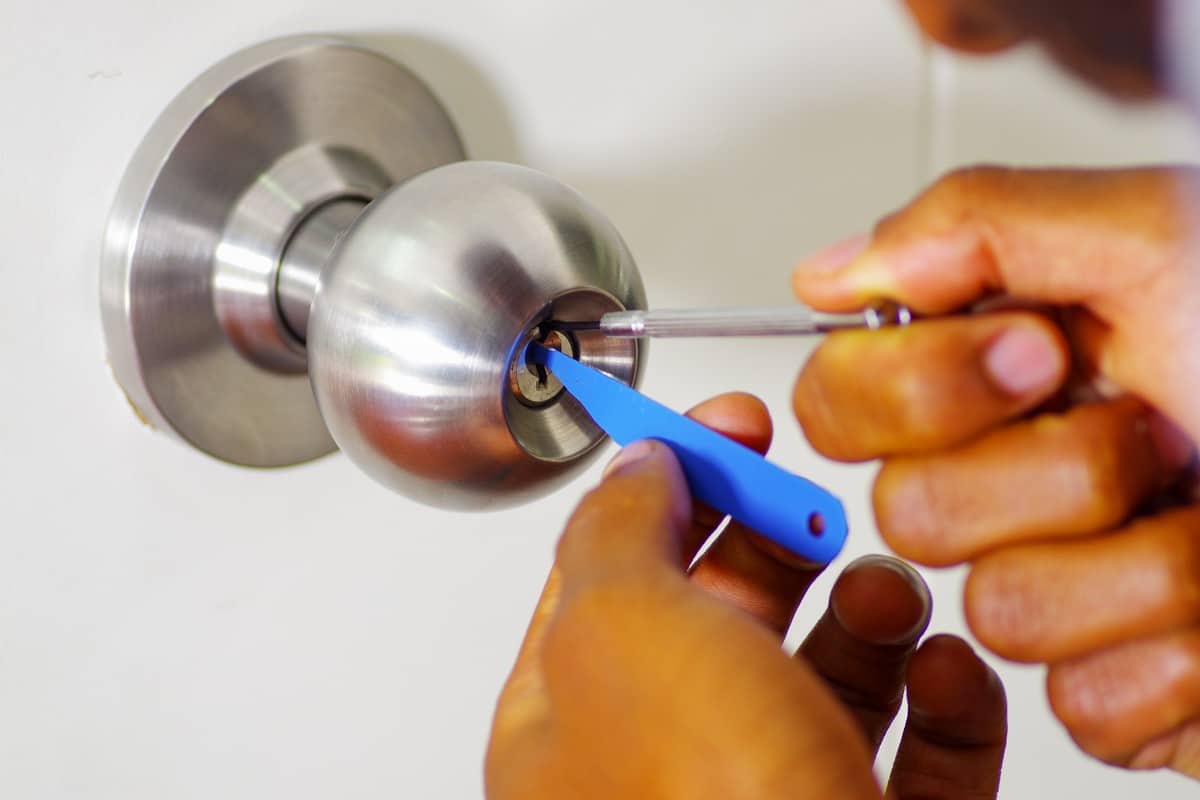
While it might sound like a difficult task to undertake at first glance, lockpicking is, in fact, far from rocket science. It’s a skill that almost anyone can learn with enough patience, diligence and the right advice.
This article has been written to set you up for maximum success when it comes to the art of opening locks without the use of a key. Whether you’re brand new to lock picking or a seasoned professional, there’ll be something you could take from this article.
Without further ado, let’s jump straight in.
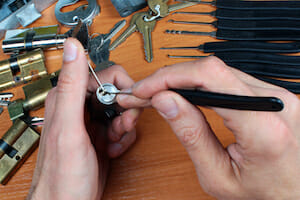
An Introduction to Lockpicking
Before we begin, let’s consider the question of whatislockpicking?
Well, simply put, lockpicking is the act of opening a lock without using a key – and, of course, without damaging or destroying the lock. It can be performed in a variety of different ways, but all stem back to the same basic principle: replicating the basic functions of a key without having it on hand to use.
Isn’t that unlawful, though? Well, it is if the lockpicker doesn’t have permission to force open the mechanism they’re intending to breach. It should be noted, therefore, that the information on this page is not to be used for unlawful purposes. Rather, it’s being written to aid hobbyists and locksmiths in their efforts.
Back to the point – a lock is picked by using an item that mimics the presence of a key. But that begs further questioning. What sort of items can do this effectively? And how can they be used?
That all depends on the type of lock. And the most common type of mechanism you’ll find yourself up against is the pin tumbler lock.
The Pin Tumbler
Pin tumbler locks are the most common type of locking mechanism. The pin tumbler is that “simple” cylinder lock that you see installed on almost any door.
It is also used in locks padlocks, deadbolts and others. Pin tumblers are made up of a range of different components, including:
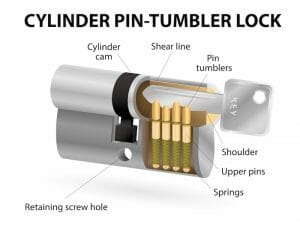
1. Housing. This is the metal outer casing that holds everything together within a locking device.
2. Plug. The plug is the hole in which a key is entering.
3. Driver pins. These comprise one of two sets of pins within every pin tumbler. Their role is to prevent the plug from being able to rotate freely without an appropriate key.
4. Key pins.This second set of pins is pushed up once a key is inserted, freeing the driver pins and enabling the plug to rotate.
5. Springs. These allow both sets of pins to move upwards upon the insertion of a key and ensure that they retain their initial position once it is removed.
Pin tumbler locks work on the same mechanical principles and become “unlocked” when a matching key is inserted into the lock and creates a sheer line.
The Sheer line is the line that is created by the pins when they are aligned in the correct order for enabling the lock to open (when the right key is inserted to the lock).
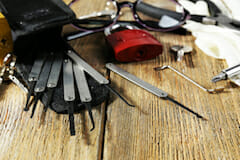
Lock Picking Tools
Professional lock picking tools are what you should aim to be using when picking locks. This would help you guarantee a successful lock picking and make the whole task much easier.
The best thing about it is that lock picking tools are simple, cheap, and you don’t need many of them to practice the art of lock picking.
Usually, some rakes and a tension wrench are all you’ll need to pick a lock, regardless of how skilled you are.
Simply put, the purpose is to align the pins into a sheer line using the rake/picking tools, while keeping a slight turning pressure using the wrench tool. Now that we’ve covered the basic mechanics of a pin tumbler lock and tools you need let’s have a look at how we can bypass these mechanisms to successfully gain access without a key. There are 2 popular methods for picking locks and these are:
Single Pin Picking
One widely-used lock picking method is a technique known as single pin picking or SPP. This method is used to open pin tumbler locks although it can be deployed when trying to open other locking mechanisms, too.
As its title suggests, to succeed in single pin picking, you’ll need a tool known as a pick – a device that resembles a short hook with a handle attached to it. You’ll also need a tensioning tool called a ‘pry bar’
Single pin picking is the act of manipulating each pin within a pin tumbler lock one by one to open the locking mechanism and enable the plug (cylinder) to be turned. To accomplish this, you’ll need to follow the steps listed below.
1. Insert your tension tool into the lock and begin turning it to “open” with a moderate amount of tension – not too much, not too little. You’ll need a relatively light amount of pressure to succeed.
2. Next, put your pin into the plug until it’s right at the back. You want to push the pin lightly against the pins inside until you can feel them springing slightly. As you run your pick along with each pin, search for one that feels more rigid or solid than the others – the binding pin.
3. Once you’ve located the binding pin, it’s time to place the tip of your pick onto the middle of the pin. If you’re not spot-on in the middle, that’s okay. It’s good to aim for the middle, but you don’t have to be dead-centre every time.
4. Now, begin to reduce the tension you apply to the plug. As you do, you’ll feel the pin start to move a little so attempt to keep it as steady as possible.
5. Finally, push the binding pin up until it reaches the shear line. When you do that, move onto the next pin whilst maintaining the same level of tension. You may hear an audible click as each pin reaches the sheer line and it may be less distinct on others. Keep an ear out for it.
6. Once you’ve placed each pin in a sheer line, turn the plug and open up the lock.
Raking
Raking is often considered to be one of the quickest and easiest lock picking methods there is. To rake a lock, you’ll need a device called, you guessed it – a rake. And a tension tool. Rakes are unique in their appearance, displaying a particular pattern of bumps that are designed to produce different responses from pins when inserted into a lock.
Raking is, really, quite a simple procedure. To pick a lock using raking, you’ll need to follow these steps:
1. Insert your tension wrench into the bottom of the plug and apply a light pressure – not too much, not too little. This tension will ensure that any tampered pins stay in position at the sheer line rather than dropping back down and re-locking the mechanism.
2. Now, insert your rake into the top of the lock.
3. While you apply a little extra torque to your tension tool, run your rake back and forth in the lock, lifting it simultaneously to add pressure to the pins.
4. Then, simply repeat this method until each pin reaches the sheer line. At this point, you should be able to open the lock.
If you don’t have professional picking tools you can also try picking the lock using hairpins or paperclips.
How to Pick a Lock Using a Hairpin or a Paper Clip
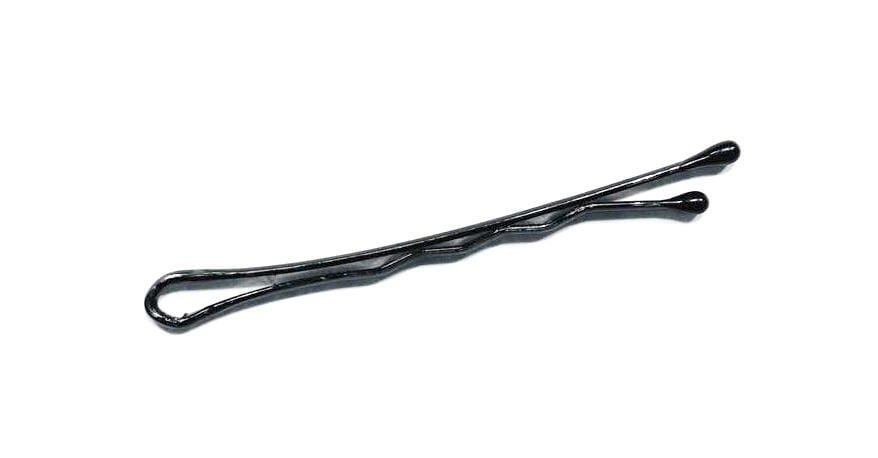
One popular way for opening locks using the picking method is using an incredibly common household item: a hairpin.
Step 1: Creating your lockpick
1. Firstly, pull apart the bobby pin so that it forms one long and flat metal piece. This will be your pick. Strip off the rubber nobs at each end and
2. Use the lock to bend the tip of your pin into a pick. Put it into the lock around one centimetre and then push the pin to the lift so that it curls up a few centimetres.
3. Bend one end of the pick into a handle.
4. Take another bobby pin and bend it back on itself in a right angle. This will create a lever you can use as a key to turn the lock once it’s opened.
Step 2: Picking your lock
1. First, insert your lever (bent end) inside the bottom section of the lock putting it as deep into the barrel as possible.
2. Turn the lever in the lock very lightly in the direction that opens it. You should maintain this light pressure throughout the remaining steps.
3. Next, insert your pin bent-side-up and feel for the locking pins inside. Get a feel for them by pushing some up and letting them drop back down. If they’re not moving at all, you may have too much tension on your lever. You should also count how many pins there are.
4. Locate the first pin and push it up until it clicks. This indicates that the pin as matched up with the sheer line of the plug and is now out of the way of the lock.
5. Find and repeat this process on all pins. Once completed, simply rotate your lever and open the lock.
This same process can be used with a pair of paperclips, so long as the clips are adjusted in the same way as outlined above.
How to Pick a Lock With a Credit Card
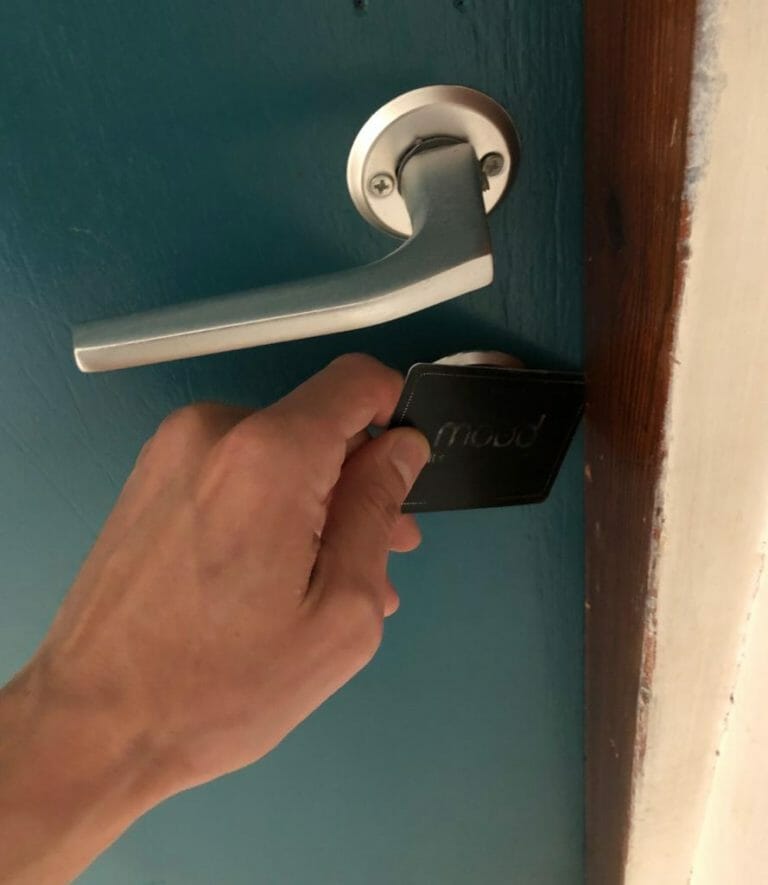
Well not exactly lock picking, but simple knob locks can be opened using a credit card or similarly-shaped piece of plastic. It should be noted that the technique we’re about to outline won’t work for pin tumbler locks – only locks that have a latch in their mechanisms.
The Steps to Opening a Door Lock Using a Credit Card
1. First, insert the card into the vertical crack between the door and doorframe and then slide it down so that it’s next to the doorknob. Push it in as far as it will go.
2. Next, tilt the card as close to the doorknob as possible. You should be able to insert it further into the gap once the card has been tilted.
3. Now, bend the card back in the opposite direction. This will force the card to slide under the rounded end, pushing it back inside the door.
4. Lastly, while the card is bent, quickly open the door and then unlock it from the other side to prevent you from being locked out again.
Conclusion
Lockpicking can be a fun and challenging art to learn. Whether it’s being practiced for commercial or personal reasons, it’s a useful skill to have under your belt since you never know when you might find yourself without your trusty set of keys.
As said earlier, though, lockpicking should never be used for unlawful purposes. Doing so will almost certainly result in hefty fines, prison sentences and, at the very least, some degree of legal trouble.
It may seem tricky at first but persevere. Like any skill worth learning, lockpicking takes time to master. You may not get it right the first time, but that’s okay. With enough practice, you’ll be well on your way to becoming a master lock picker in a fairly short time.
